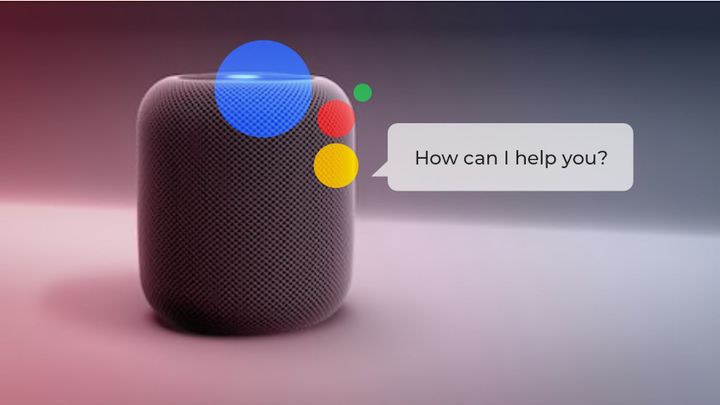
Jump To Section
- 1 What are Cross-Channel Journeys?
- 2 What is Cross-Channel Journey Optimization?
- 3 What is Cross-Channel User Experience (UX) Design?
- 4 How to Conduct UX/UI Research and Why It Matters?
- 5 Why UX Research is Essential To Plan Better Cross-Channel Experiences
- 6 UX Design Heuristics: Guidelines for Cross-Channel Customer Experience
- 7 Takeaway
If there’s one big transformation we’ve witnessed with the onset of the digital era, it’s that user experience design has come a long way.
The late 80s and early 90s saw a much-needed shift from the traditional way of designing objects to the idea of interfaces as design artifacts, accredited to acclaimed designer Gui Bonsiepe (1995). One of the first to see interfaces as a communication object, Bonsiepe saw interfaces as a “bridge” between humans, the product, and the objective.
Ten years later, with faster microcomputers integrated into cell phones, cars, cameras, houses, appliances, etc., capable of communicating with other devices through not just one touchpoint of the customer journey but diverse technological possibilities of UX connections, it became clear that the “bridge” in user experience design goes far beyond interfaces.
What are Cross-Channel Journeys?
Cross-channel journeys refer to the experience a customer has on not just a single customer touchpoint but across a combination of multiple different channels.
So what is a cross channel customer experience?
Human-computer interaction evolved into human-information interaction, and multi-channel interactions are increasingly transforming into cross-channel customer interactions.
In the cross channel customer experience, the user experience as a narrative journey involves actions in the physical and digital worlds pervading through many different digital devices, all linked together by a dynamic system ecology.
In the digital customer journey experience, these connections, across multiple user experience touchpoints in the cross channel customer journey, bring together short narratives into one whole story.
What is Cross-Channel Journey Optimization?
Cross-channel journey optimization is where the multi-channel customer journey map is integrated with various techniques and tactics to cater to the customer via every channel on which they’re present.
Usually, usability evaluations concentrate on the experience of users interacting with a single system.
However, the whole experience, especially now in today’s digital world, trespasses the system and includes moments that are both precedent and subsequent to the direct interaction with the system.
To truly optimize this cross-channel journey, user experience research and design will determine the quality of the customer experience you can offer to your users.
What is Cross-Channel User Experience (UX) Design?
From a UX design perspective, products and services must go beyond the good usability of systems and understand the users’ complete journey.
Storyboarding is one method in UX design that helps UX teams align on the vision for the design they work on, with the single end goal of mapping out the user journey for cross channel UX. To learn all about the What, When, Why, and How of Storyboarding in UX Design, read this article here.
Businesses must understand the whole journey to plan customer touch points and create a service/product experience that is available on various different channels — a pervasive cross channel experience.
To achieve this cross-channel customer experience, user experience research plays a critical role in the UX design process.
How to Conduct UX/UI Research and Why It Matters?
UI/UX research is conducted through a variety of both quantitative and qualitative user experience research methods.
When it comes to digital customer journeys, user experience research is one of the most integral parts of the UX process because it helps extract critical insights from early adopters. Understanding how users will perceive your product/service can be an aid when it comes to decreasing the learning curve for users and identifying opportunities for improvement. Learn more about why User Experience Research matters and what it can do for you here.
Why UX Research is Essential To Plan Better Cross-Channel Experiences
Different from a multi channel user experience, where users can connect to a product/service through different channels, the cross-channel experience will pervasively cross through channels and physical ambiance to create one experience.
Connecting the dots
Cross-channel contexts take the user experience to new amplitudes, and it is imperative to adapt usability principles to a narrative experience scenario, as the technological evolution and users’ interaction with devices and environment have been gradually changing and are expected to evolve to an even more integrated cross-channel experience with the metaverse.
Although usability tests and measurements focus primarily on interactions with isolated devices, several user experience research methods can surface information about users that help understand their mental model, interaction needs, and cultural-interaction references to better comprehend their journey of experience and map contexts that could take users to interact with your product. Through generative research methods, UX strategists can connect these dots, build experience mapping and prepare a project with multiple possibilities of interaction and multi channel design.
Planning for a better user experience
The journey of your user will start well before they connect with your product/service, with several contextual scenarios leading them to your product.
Mapping possible precedent actions and contexts of use can help understand what triggers the full journey of users and direct your product/service to be there when they most need it.
Vague assumptions based on intuition have little role in the digital industry and can lead you down the wrong path, wasting precious time and resources.
This is where user experience research comes in as the key to gathering the knowledge necessary to project a cross-channel experience:
- Knowing who the audience is for your product. Many times, this varies far from the initial assumptions.
- Thinking outside digital devices. Interaction with isolated devices is a very narrow perspective of the full scenario.
- Understanding the context of use that led people to use your product. What are the precedents that ignite interest?
- Planning how your product can help and create value for users. The product needs to be an ally, not a difficult step to reach a goal.
- Continuing the UX journey beyond your product. Plan for a smooth transition and a positive impact on the customer.
Users will reach your system through diverse devices, and so the interaction must be planned in a way that offers a smooth journey with many touch points, blending the spaces in one full experience.
Understanding this full experience will enable a better connection with not just service design strategies, but business strategies as well.
UX Design Heuristics: Guidelines for Cross-Channel Customer Experience
Heuristic evaluation in UX has always been centered around the user; how easy and user-friendly your interface is for the target customer contributes largely toward customer satisfaction, and even more so in the presence of cross-channel experiences.
Therefore, the following set of UX heuristics (or guidelines) aims to help guide products for a better integrated, UX-pervasive experience. These are guidelines that can, and should, be applied to any user experience service system that intends to provide an experience with interoperability between devices and systems:
1. Place-making
Place-making refers to the self-localization of users when using the system during their customer experience journey. Visual interaction, hierarchical layout, and structure, as well as physical environment, should facilitate the users’ understanding of where they are in the journey and where they can go from there.
2. Consistency
The system must present visual, typographic, information, action, and interaction consistency. If a user utilizes different devices to execute partial actions of the whole experience, each touchpoint access must present the same rules and responses to the actions.
3. Resilience
The flexibility of the interaction flow and touchpoints should be adequate for different users and different journey and search strategies from different contexts of use.
4. Reduction
Even if the back end of the system is complex in its structure, the options and the contents must be presented to the users in an objective way and with simple usage, providing reduced interactive actions and minimum cognitive workload in their journey.
5. Correlation
The system must help users find information and content naturally. There must be a correlation of data between distinct points of interaction and devices. When users move from one device to another, the interoperability of information must be in unison.
6. Equivalency to cultural conventions
It is important to understand users’ references regarding technology, processes, functionality comprehension, and interactions — all of these can be used as a base in the development of a new system.
7. Visual intuitive content
Users must recognize functionalities, steps, hierarchy, pathways, and information with minimal memory load – this means making objects, actions, and options easy to recognize and understand by the user.
8. Natural, intuitive, and direct interactions
Any touch point of interaction with the system should be as intuitive as possible, by direct gestural manipulation or simple vocal commands.
9. Contextual ergonomics
Physical environments, contexts of use within the journey of experience, and human physical limitations should be considered while projecting touchpoints of interaction with the system.
Takeaway
Undoubtedly, the digital landscape has evolved to a point where we can all safely agree that user experience has taken center stage in nearly every industry.
But does the evolution of digital experiences stop here?
From what we can witness today, business interactions in the digital world are constantly evolving, pushing the boundaries of user experience design.
The onus is on UX researchers and strategists to respond and adapt well to these changes, integrating user experience research methods and journey optimization techniques to offer a complete cross-channel experience — meeting the customer where they are.



